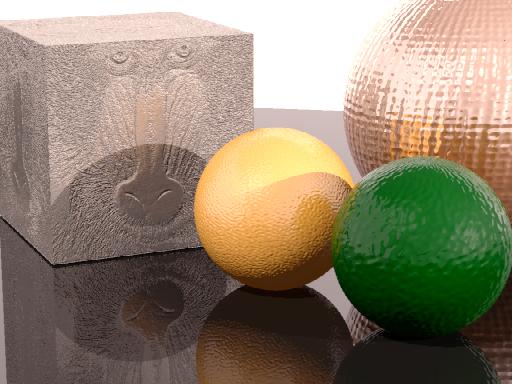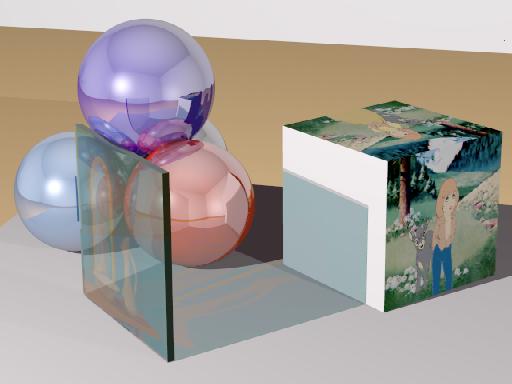|
|
Reflection and Transparency
Cornell University Program of Computer Graphics |
|
||||
|
These two images illustrate the extent to which light reflection can
be modeled by tracing the paths of light rays entering your eye. The
images are calculated from one specific viewpoint only, and must be
completely recreated if the viewer's position moves.
Shadows are calculated by tracing light rays from the light source to the objects.
The face is applied to the cube by mapping a flat image "texture" onto the object, as if it were wallpaper on a wall. The bumpiness is simulated by a process called, appropriately enough, "bump mapping". This technique is far easier than modeling all the bumps in three dimensions. The glass object is transparent, so the lighting model must allow a certain percentage of light to pass through. Since the square piece of glass is not perfectly transparent, we see its shadow clearly. Note that we also see a dim image that appears to be etched on the glass and projected on the surface of the table -- an image of an arch and a tall pitcher.
| ||||||
| ||||||

